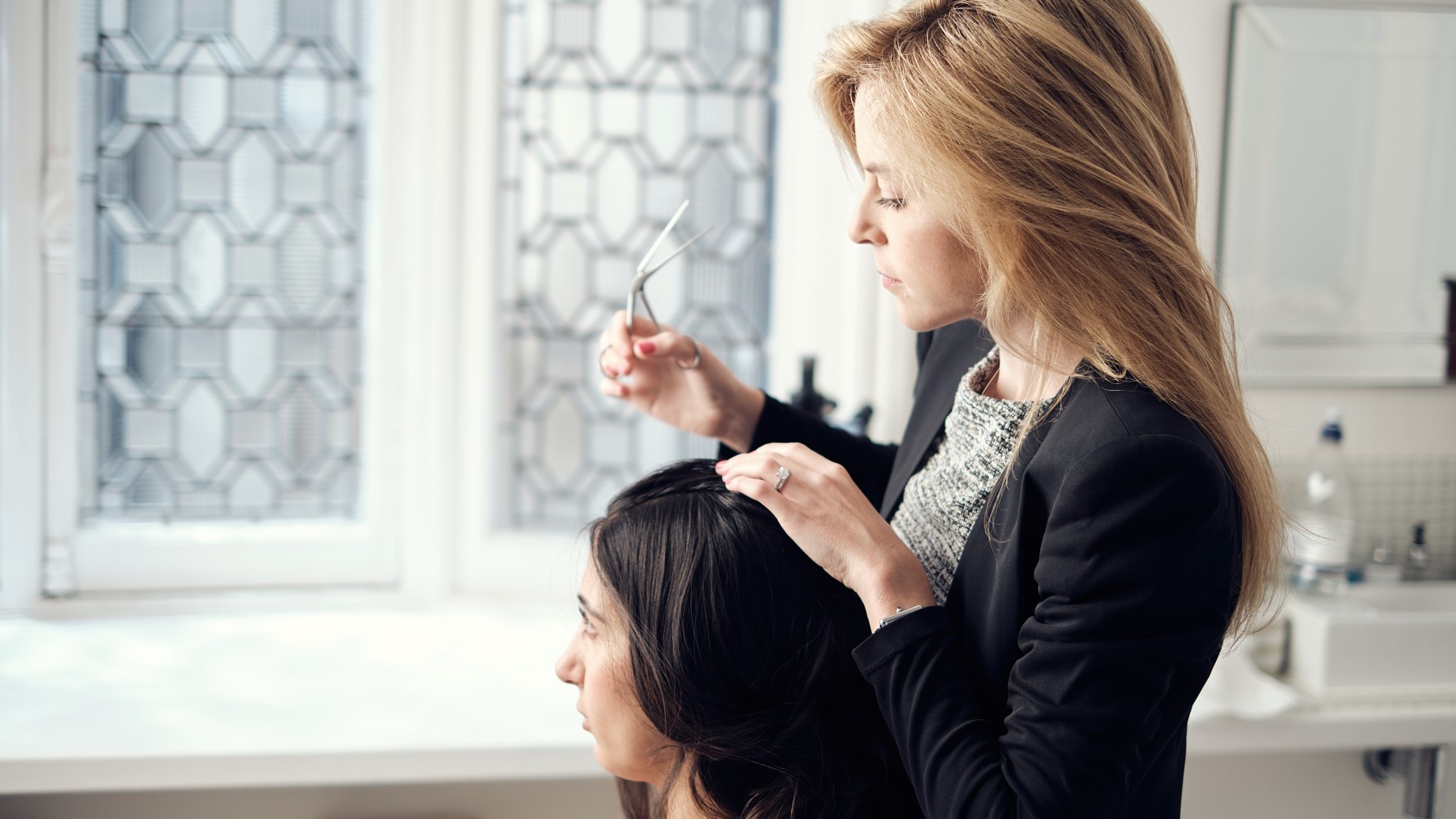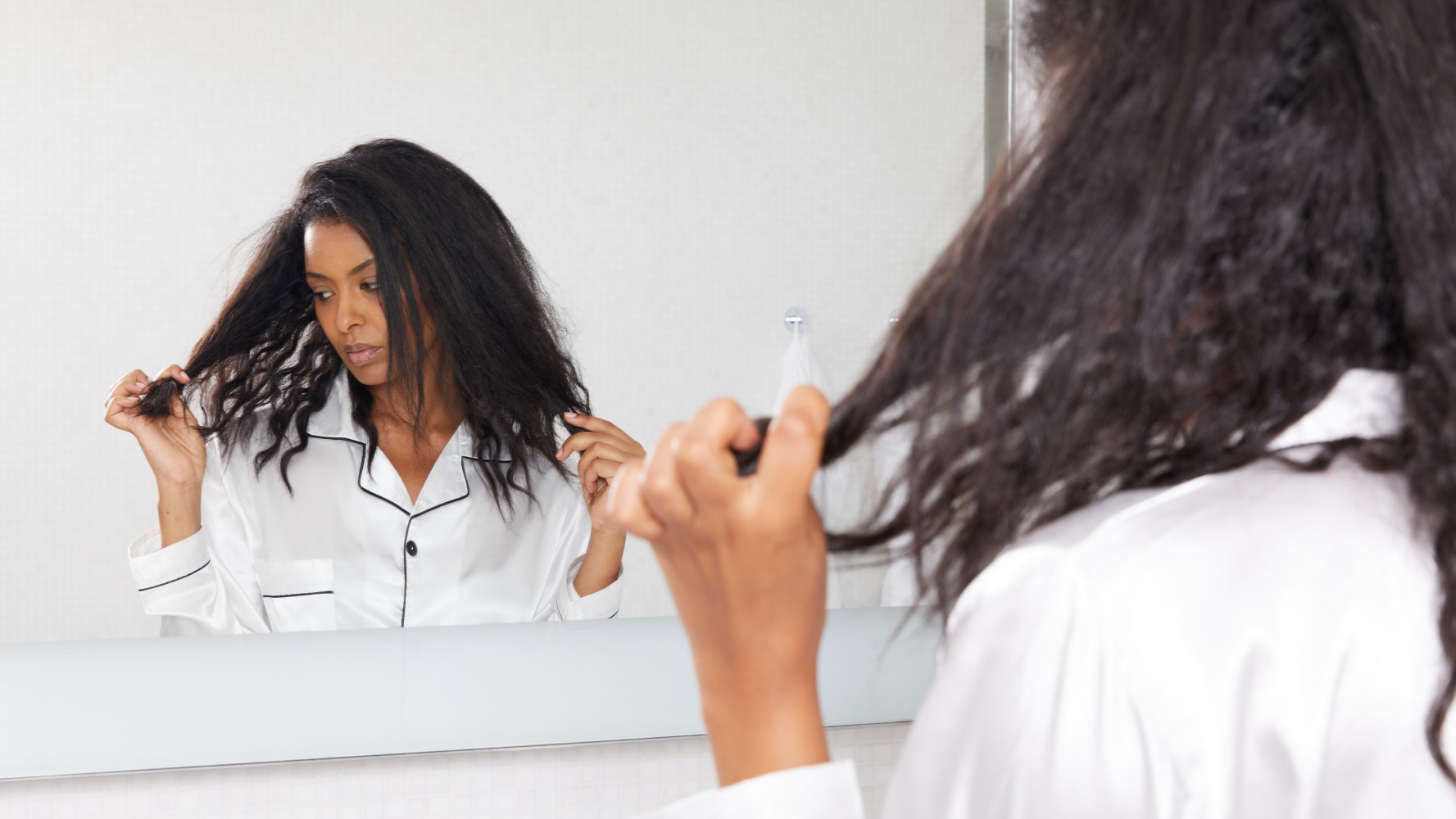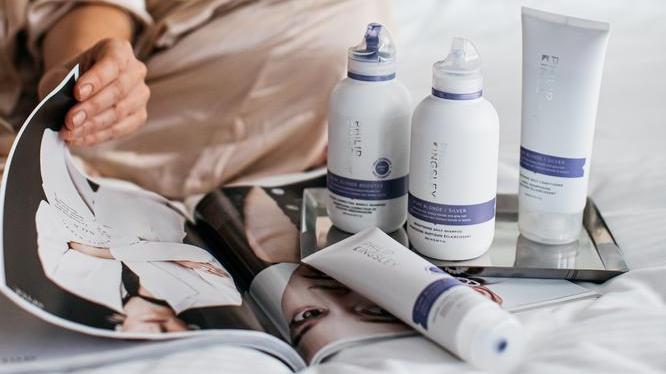Female pattern hair loss (also known as hair thinning, androgenic thinning, androgenic alopecia, and reduced hair volume) can be a distressing condition. At Philip Kingsley, we often see clients who feel embarrassed or lacking in confidence because of it. Unlike male pattern hair loss, female pattern hair loss is still not widely talked about — but if you are experiencing it, know that you are not alone. In the UK, over 20% of women under fifty experience hair thinning, and this number jumps to about 65% during and after menopause.
It is extremely unusual for women to go completely bald from female pattern hair loss, but it is still a condition that deserves proper attention to determine the right path for you..
There are several effective ways of slowing down (and sometimes stopping) hair thinning in women. In fact, in the Philip Kingsley Trichological Clinics, our experts usually see an improvement in hair density and new hair growth using a combination of holistic approaches and our bespoke topical treatments. It is important to realise, however, that treatment can take time.
We are always here to help with any type of hair loss. If you would like to book a Consultation at a Philip Kingsley Clinic, please contact us.
What Causes Female Pattern Hair Loss?
If you have female pattern hair loss, this does not mean that your hair is falling out. Rather, it means that your individual hairs are growing back thinner and shorter over several years, through many progressive hair growth cycles.
Hair thinning in women, as in men, is genetic, and can be inherited from either parent. It is caused by a sensitivity in your hair follicles to a certain form of testosterone called dihydrotestosterone (DHT). Both men and women produce testosterone. However, the levels are higher in men, which is why androgenic thinning is usually more pronounced in men and usually starts at an earlier age.
If you have inherited follicle sensitivity, it will be triggered at some point after puberty (which is when your body starts to produce testosterone). Once the sensitivity is triggered, your hair follicles will gradually miniaturise and grow back thinner over the years, reducing the volume and length of your hair, and making your scalp more visible. Eventually, hair follicles can become so small that they stop producing a hair altogether.
The severity of androgenic thinning, and what age it starts at, depends on how strong your sensitivity to androgens is. In women, thinning most often begins around menopause, but it can also occur in younger women who have high follicle sensitivity.
What are the Symptoms of Female Pattern Hair Loss?
Hair thinning is a gradual process, and unfortunately you will probably have lost over 15% of your hair volume before you notice it. It is best to see a Trichologist if you suspect you are experiencing hair thinning. The earlier you begin treatment, the more hair you are likely to be able to retain.
Although hair thinning in women and men is caused by the same thing, its physical patterns are usually different.
How male and female hair thinning differ:
- Women tend to lose volume in a diffuse (spread out) manner around the temples and crown of the head, whereas men’s hairlines tend to recede from the front
- It is very rare for women to go completely bald from genetic hair thinning
- Women are more likely than men to regain some hair density (although they do not always do so)
Early signs of female pattern hair loss include:
- A wider hair parting
- Increased scalp visibility through the crown of your hair
- Recession at your temples
- Your hair not growing as long as it used to
A reduction in hair volume can occur on its own, or alongside increased hair shedding (telogen effluvium)
What Triggers Female Pattern Hair Loss?
Because hair thinning is a condition caused by a sensitivity to hormones, it is usually both triggered and affected by hormonal changes in your body.
Many people associate finer hair with ageing. This is because hair thinning is gradual, and often starts around menopause. But women can experience genetic thinning as early as puberty, especially if you have a strong genetic predisposition to it.
Some common triggers of female pattern hair loss include:
How Do You Treat Female Pattern Hair Loss?
Treatment for hair thinning can take time, partly because of the rhythm of your hair growth cycle, and partly because you will probably have lost at least 15% of your hair volume before you even notice it.
However, there are effective products available that can help slow hair thinning, and can also improve hair density. The earlier you start treatment, the better your results are likely to be.
Treatment for hair thinning must always address the hormonal sensitivity that is present in your hair follicles. This can involve one or a combination of any of the following:
- Hair follicle stimulants such as minoxidil and methyl nicotinate
- Anti-androgenic oral contraceptive pills, such as Dianette and Yasmin
- Anti-androgenic medications, such as Spirolonactone
- Stress management (stress can raise DHT levels in your body)
- In the Philip Kingsley Clinics, our Trichologists formulate prescription-only scalp drops, containing a combination of anti-androgenic hormones, as well as a follicle stimulant. If you would like more information about our bespoke drops, please contact us.
- There are also many retail products available that immediately give you the appearance of thicker hair. Colouring and bleaching your hair can also help give the illusion of more volume, as these processes plump your hair shaft. Choosing a hair colour that is close to your scalp colour will also help, as it disguises the contrast between areas of uncovered scalp and hair.
Treatments for Female Pattern Hair Loss at the Philip Kingsley Clinics
At our Clinics, our expert Trichologists work with an in-house doctor to offer a variety of bespoke, prescription-only drops that you apply topically to your scalp. Some of these drops contain hormones and some do not. In most cases, female Clients using these drops will see an improvement in their hair density within 3-6 months.
We also provide different strengths of minoxidil, selected by our Trichologists depending on what best suits your body, health and age.
Please note, our Trichologists do not prescribe minoxidil on its own, because this is not the most effective treatment for reduced hair volume. Minoxidil is a hair follicle stimulant (it helps to keep hairs in their growing phase) and should be combined with an anti-testosterone ingredient for maximum effect.







